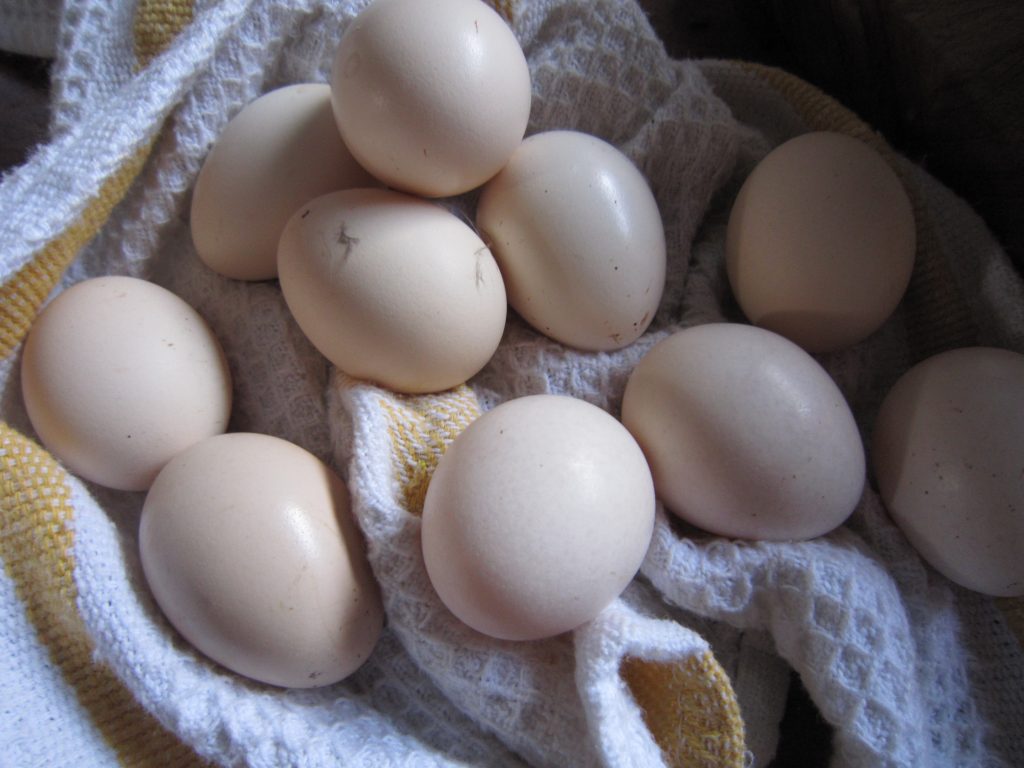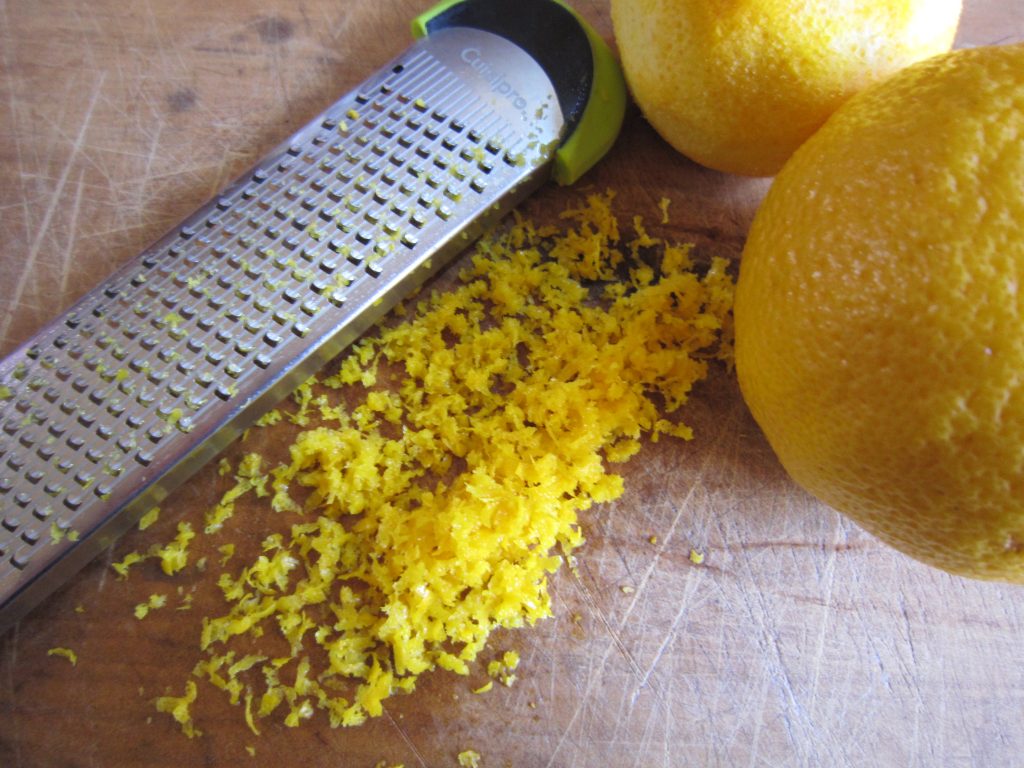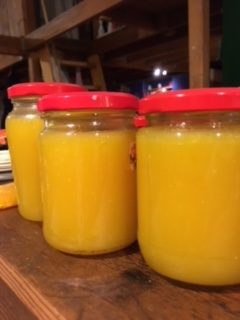The lemon trees are loaded and the chooks are laying fit to bust. It never rains but it pours around here. (literally as well at metaphorically) So what to do with the abundance? It is tricky when you live on your own and far from your kids, to know what to do with all the produce. I’ve already preserved lemons, made marmalade and mixed peel. Eggs are more difficult to preserve but lemon curd is one way. I thought I could use some lemon curd or lemon honey, as it is also called, in an adaptation of my apple and almond cake I’ll substitute curd for the apples, add a layer of sour cream and maybe use poppy seeds instead of the almonds. I’ve got a recipe tucked away somewhere that sloshes a bit of gin on top of a lemon cake! That sounds yummy too. I’ll let you know how it turns out! Again, I’m always a sucker for a citron tart with a dollop of thick, tart yoghurt. So many possibilities. I think I’ll be needing to make a few batches! It is usual to store lemon curd in jars but still it must be kept in the fridge and will last for only a few months. I am going to experiment and freeze my lemon curd in snaplock bags

INGREDIENTS; 6 lemons, 185gms butter, 650g caster sugar, 6 eggs.
METHOD; Grate the skin of the lemons, avoiding the bitter white pith.

Now juice the lemons and strain to remove any pips. Add the juice to the zest.

My new zester is a wonderful additions to my kitchen. I’ve been using the zester for grating fresh ginger for porridge and it produces such a fine zest so quickly and easily.
On a low heat melt the butter in a pot large enough to hold the remaining ingredients comfortably.
Add the zest,the juice and the sugar to the pan. Stir with a wooden spoon until the sugar has dissolved.
Now add the eggs to the mixture. The eggs shoud have been lightly beaten before being added to the mix but I forgot soooo I used a whisk and blended them in before they cooked. Whew! Maintaining a low heat is crucial at this stage as you don’t want the eggs to cook before being blended in and you don’t want the curd to catch on the bottom of the pan. You’ll need to stir the curd continuously from 15 to 30 minutes until it thickens to the right consistency.
Here is a nifty way to check if it’s thick enough. Dip the wooden spoon in the curd and run your finger along the spoon. When your finger mark stays, the curd is ready.
Transfer the curd to a medium meshed sieve sitting over top a bowl. You will need to force the curd through the seive. I can’t abide waste so have also frozen the zest that couldn’t pass through the mesh. I’ll use it when I next make a simple madeira cake, adding it to the batter.

Instead of pouring the curd into hot, clean and dry jars I froze mine into zip-lock bags. I made sure the curd filled the whole bag and contained no air. I’ll simply defrost when I’m ready to use.
Update!!! It froze so well that this time I used glass jars to freeze in. Better all round. Make sure to leave some room at the top of the jar for expansion as it freezes. The recipe makes 5 x 190gm jars.

Trisha, how did the frozen lemon curd turn out? I am waiting for the next lemon glut so I can try making huge batches and freezing it too. It could contribute to my kitchen goddessery to have it always on hand for little tartlets, scones and the Lemon Krummeltorte from Cuisine magazine. Ooh I can taste it now – please let us know.
The curd looks the same as when it went in, I haven’t had the time to use it yet. I’m getting close to it though. Email me your Krummeltorte recipe please and I’ll definately let you know how the curd turns out.
Down here in New Zealand lemon season is upon us, I juice and zest them by the batch, then freeze ready to make when needed all year. I will try your recipe for my next batch. looks lovely.